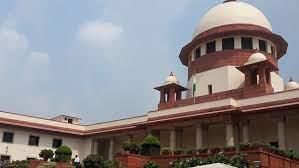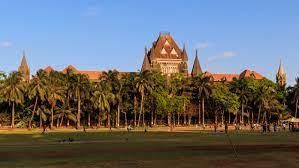Weekly Current Affairs (8th to 14th April 2024) Part - 1 | General Test Preparation for CUET UG - CUET Commerce PDF Download
| Table of contents |

|
| Industrial Alcohol Regulation |

|
| Authority of High Court Benches |

|
| Constitutional Morality |

|
| World Anti-Doping Report 2022 |

|
| Semiconductor Chip Manufacturing Technology |

|
Industrial Alcohol Regulation
Context: The Supreme Court, under the leadership of the Chief Justice of India (CJI), is currently deliberating on a case involving a 9-judge Constitution Bench. This case focuses on the issue of whether states possess the authority to regulate and impose excise duty on industrial alcohol.
Understanding the Constitutional Debate Regarding Industrial Alcohol:
Constitutional Framework:
- State List (Entry 8): Entry 8 in the State List of the Seventh Schedule of the Indian Constitution grants state governments the power to legislate on various aspects of intoxicating liquors, including their production, manufacture, possession, transport, purchase, and sale.
- Union List (Entry 52): Gives Parliament the authority to legislate on industries deemed expedient in the public interest.
- Concurrent List (Entry 33): Allows both states and the Central government to legislate on certain industries, with the condition that state laws cannot contradict central legislation.
- Industrial alcohol falls under the Industries (Development and Regulation) Act, 1951 (IDRA), which designates it as a subject of regulation. This act empowers the Central government to regulate industrial alcohol.
Central Issue:
- The main question revolves around whether states retain the autonomy to regulate industrial alcohol or if exclusive control lies with the Central government.
Legal Interpretation:
- Subjects listed in the Concurrent List can be regulated by both states and the Central government, but state laws cannot contravene central legislation.
- The IDRA, 1951, which includes industrial alcohol, suggests central authority over the subject matter.
What are the Arguments of the States?
Interpretation of Entry 8:
- It is argued that the phrase "intoxicating liquors" in Entry 8 of the State List encompasses all liquids containing alcohol.
- Emphasis is placed on the historical usage of terms such as 'liquor', 'spirit', and 'intoxicant' in pre-constitutional excise laws.
Scope of Union's Power:
- The contention is made that Entry 52 of the Union List does not extend to the regulation of "finished products" like industrial alcohol post-denaturation.
- It is asserted that such control falls under Entry 33 of the Concurrent List. To exercise exclusive authority over industrial alcohol regulation, the Centre would need to issue an order under Section 18-G of the IDRA. Without such an order, states retain jurisdiction.
- The term ‘denatured alcohol’ refers to alcohol products adulterated with toxic and/or bad tasting additives (e.g., methanol, benzene, pyridine, castor oil, gasoline and acetone), making it unsuitable for human consumption.
Preservation of States' Powers:
- Caution is expressed against diminishing states' authority. Citing the ITC Ltd v Agricultural Produce Market Committee Case, 2002, which emphasises states are not subordinate to the Centre.
- It stresses the need to uphold states' constitutional powers and avoid interpretations that weaken their autonomy.
What is Excise Duty?
- Excise duty represents an indirect tax imposed on goods during their production, licensing, and sale processes. It is remitted to the Government of India by producers of goods and is applicable to domestically manufactured goods, contrasting with Customs duty, which is imposed on goods imported from foreign countries.
- Previously, various forms of excise duty existed at the central level, such as Central Excise Duty and Additional Excise Duty. However, with the implementation of the Goods and Services Tax (GST) in July 2017, many types of excise duty were amalgamated. Presently, excise duty is solely applicable to petroleum and liquor.
- In the past, excise duty was collected upon the removal of manufactured goods, while GST is charged on the supply of goods and services.
- Excise duty on alcohol serves as a significant source of revenue for states, with states often augmenting excise duty on alcohol consumption to bolster their income. For instance, in 2023, Karnataka raised the Additional Excise Duty (AED) on Indian Made Liquor (IML) by 20%.
Authority of High Court Benches
Context: The Madras High Court, based in its principal seat, has recently affirmed the jurisdiction of the Madurai Bench to adjudicate on all categories of public interest litigation (PIL), extending beyond matters concerning the 13 districts within its territorial purview to encompass statewide issues.
Understanding the Ruling of the Madras Court:
Key Issue:
- Previously, a directive from the former Chief Justice of the Madras High Court had directed PILs regarding temple interests statewide to be filed at the principal seat of the court rather than the Madurai Bench, which primarily focused on district-specific cases.
Ruling:
- In the recent judgment, the Madras High Court has reinstated the authority of the Madurai Bench to hear all varieties of PILs, including those involving statewide concerns, emphasizing that restricting pan-state matters to the principal seat would hinder the effective functioning of the Madurai Bench.
Legal Justification:
- The court based its decision on the presidential notification issued in 2004 for the establishment of the Madurai Bench, which did not impose any such restriction.
- Additionally, a previous full Bench ruling in B. Stalin versus Registrar, 2012, clarified that there were no limitations on the types of PILs that could be filed and heard at the Madurai Bench, while affirming the Chief Justice's authority to transfer cases between the principal seat and the Madurai Bench.
What is the Process of Establishment of High Court and Permanent Benches?
Establishment of High Court Benches:
- Article 214 of the constitution of India provides that there shall be a High Court for each state.
- However, Section 51 of the States' Reorganisation Act, 1956 provide for setting up benches away from the principal seat.
Justice Jaswant Singh Commission:
- In 1981, a commission was appointed to consider demands for High Court Benches in Western districts of Uttar Pradesh.
- Terms of reference were later expanded in 1983 to examine the general question of establishing Benches of High Courts at places other than their principal seats.
Recommendations:
- The commission recommended criteria including characteristics of the region, population size, area, means of travel and communication, distance for litigants, pendency rates, infrastructure availability, and legal talent.
Supreme Court's Position:
- In a writ petition, the Supreme Court examined the demand for establishing High Court Benches at centres other than the principal seat, emphasising that decisions should be based on rational, not emotional, sentimental, or parochial considerations.
- The consensus among the State Government, the Chief Justice of the concerned High Court, and the Governor is necessary for setting up Benches.
Role of Union Government:
- The government considers proposals for setting up benches only after receiving a complete proposal from the State Government, with the consent of the Chief Justice and the Governor.
- The State Government is responsible for providing infrastructural facilities and bearing the entire expenditure of the High Court and its Bench.
- The Chief Justice manages the day-to-day administration of the High Court and its Bench, deputing Judges from the Principal Seat to the Bench as needed.
- A consultative approach requiring consensus among the State Government and the High Court is adopted for deciding on setting up Benches.
Constitutional Morality
Context: The recent apprehension of a sitting chief minister on corruption allegations has sparked legal, political, and constitutional debates, particularly regarding its alignment with constitutional morality, especially in a parliamentary democracy such as India.
Understanding Constitutional Morality:
Concept:
- Constitutional morality (CM) denotes the principles and values underlying a constitution, guiding the actions of both the government and citizens.
- Originally introduced by British Classicist George Grote in the 19th century, Dr. B.R. Ambedkar later popularized the term in India.
- It emphasizes a profound respect for the constitutional framework of a nation.
Pillars:
- Constitutional Values: Upholding core constitutional principles like justice, liberty, equality, fraternity, secularism, and individual dignity.
- Rule of Law: Ensuring everyone, including government officials, abides by and is answerable under the law.
- Democratic Principles: Facilitating a representative democracy where citizens engage in decision-making and hold elected representatives accountable.
- Fundamental Rights: Protecting and honoring fundamental rights such as equality, freedom of expression, and the right to life.
- Separation of Powers: Maintaining a balance among the legislative, executive, and judicial branches to prevent any one from overpowering.
- Checks and Balances: Establishing mechanisms to prevent abuse of power and safeguard individual rights.
- Constitutional Interpretation: Interpreting the constitution in a manner that aligns with its principles and adapts to societal changes.
- Ethical Governance: Ensuring ethical conduct, transparency, and integrity in public service.
Application in Indian Context:
- While not explicitly stated in the Indian Constitution, the concept is ingrained in its core principles.
- This essence is evident in the Preamble, Fundamental Rights, Directive Principles, and Supreme Court judgments.
- Examples of Upholding Constitutional Morality:
- Kesavananda Bharati v. State of Kerala, 1973: Established the "basic structure doctrine," limiting Parliament's power to amend the Constitution.
- Naz Foundation v. Government of NCT of Delhi, 2009: Decriminalized consensual same-sex relationships, prioritizing individual rights over societal perceptions.
- Indian Young Lawyers Association v. State of Kerala (Sabarimala Case), 2018: Overturned the ban on women's entry into Sabarimala temple, asserting principles of justice and equality.
Challenges in India:
- Political Interference: Interference in constitutional bodies undermines their autonomy and impartiality.
- Judicial Activism vs. Restraint: Balancing judicial activism with restraint to avoid encroachment on the domains of other branches.
- Enforcement and Compliance: Ensuring effective enforcement and compliance of constitutional principles amidst implementation gaps and delays in justice delivery.
Way Forward
- Strengthening Institutions: Upholding constitutional morality necessitates strengthening the independence, integrity, and effectiveness of institutions such as the Election Commission, National Investigation Agency (NIA) and Central Bureau of Investigation (CBI).
- Ensuring transparent appointments, reducing political interference, and enhancing accountability mechanisms are critical steps.
- Promoting Civic Education: Increasing awareness and understanding of constitutional rights and values among the public, especially youth, is vital.
- Civic education programs in schools and colleges can instil a sense of constitutional responsibility and empower citizens to participate meaningfully in democratic processes.
- Enhancing Access to Justice: Improving access to justice, particularly for marginalised and vulnerable communities, is essential for upholding constitutional principles.
- This includes expanding legal aid services, reducing judicial backlog, simplifying legal procedures, and promoting alternative dispute resolution mechanisms.
- Encouraging Ethical Leadership: Promoting ethical leadership and governance practices at all levels is vital for upholding constitutional values.
- Leaders and public officials should demonstrate integrity, accountability, and a commitment to serving the public interest, thereby setting a positive example for society.
- Adapting to Evolving Challenges: Continuously adapting legal and institutional frameworks to address emerging challenges to constitutional morality, such as technological advancements, globalisation, and environmental concerns, is necessary for relevance and effectiveness.
World Anti-Doping Report 2022
Context: The release of the World Anti-Doping Agency (WADA) anti-doping report for 2022 has drawn attention due to its concerning revelations regarding global doping violations, highlighting the urgent need for robust measures to preserve the integrity of sports.
Key Insights from the Report:
India Leads in Doping Offences:
- India has emerged as the frontrunner in doping violations globally, with a significant 3.26% of tested athletes returning positive results.
- Among 3,865 samples tested by India's National Anti-Doping Agency (NADA), 125 yielded Adverse Analytical Findings (AAFs), surpassing the 100-mark and topping nations testing over 2,000 samples.
- An AAF denotes the identification of prohibited substances and/or their byproducts in a sample by a WADA-accredited laboratory.
- Despite ranking 11th in the number of samples tested, India's doping infractions exceeded those of prominent sporting nations such as Russia, the USA, Italy, and France.
Comparison with Other Countries:
- South Africa trails India with 2.09% of samples testing positive among nations examining over 2,000 samples.
- China conducted the highest number of tests (17,357), registering a mere 0.25% of AAFs, while the USA (84) and Russia (85) closely followed India in positive findings.
Overall Increase in Testing and AAFs:
- WADA noted a 6.4% surge in the total number of samples analyzed and reported in its Anti-Doping Administration and Management System (ADAMS) in 2022 compared to 2021, indicating a positive trend in efforts to uphold sports integrity.
- The percentage of AAFs escalated from 0.65% in 2021 to 0.77% in 2022.
- The director general of WADA underscored the significance of intelligence-driven strategic testing plans alongside values-based education, intelligence, investigations, and other measures to effectively combat doping.
What are the Implications of These Findings for India?
Concerns Regarding Athletes:
- The prevalence of doping among young athletes raises serious concerns about their physical and mental development.
- Doping poses significant health risks to athletes and undermines their long-term well-being.
- It is imperative for India to prioritise the health and safety of its athletes by implementing measures to prevent doping and promote clean sports culture.
Reputation Damage:
- India's standing as the country with the highest percentage of doping offenders tarnishes its reputation in the international sports community.
- The prevalence of doping could erode trust in Indian athletes and cast doubts on their achievements, impacting India's credibility in global sports.
Olympic 2024:
- A total of 142 Indian athletes were caught for doping-related activities in the period between April 2022 and March 2023, data compiled by the NADA has revealed.
- Doping violations may pose a significant risk of disqualification for Indian athletes in the coming Olympics 2024, depriving them of the opportunity to compete and represent their country at the highest level of sporting competition.
- The threat of disqualification highlights the need for India to address doping effectively and ensure clean participation in the Olympics.
Discrepancies in Testing Efforts:
- While the total number of samples tested increased from 1,794 in 2021 to 3,865 in 2022, it pales in comparison to countries like China, which tested 17,357 samples (almost five times that of India) but produced just 33 positive results.
- Despite increased testing, the number of positive cases remains a concern, indicating the need for more comprehensive measures.
Regulatory Oversight:
- India's position at the top of the doping offenders list raises concerns and highlights systemic issues within the country's anti-doping framework.
- There is a pressing need to strengthen regulatory frameworks and enhance monitoring mechanisms to curb doping effectively.
Economic Impact:
- The doping crisis could have economic repercussions, affecting sponsorships, investments, and revenue streams associated with Indian sports.
- Upholding integrity in sports is essential to sustain and grow India's sports industry and economy.
What is Anti-Doping?
About:
- Doping is the act of consuming artificial and often illegal substances to gain an advantage over others in sporting competitions (For example: anabolic steroids, human growth hormones, stimulants and diuretics).
- Doping products are often illegally produced, trafficked and distributed. As they are rarely approved for public use, their consumption is dangerous and poses a serious health risk to both professional and amateur sports people.
- Anti Doping is opposing or prohibiting illegal doping to improve athletic performance.
India’s Initiatives Related to Anti-Doping:
National Anti-Doping Agency (NADA):
- NADA was set up as a registered society under the Societies Registration Act of 1860 in 2005, with a mandate of creating dope-free sports in India.
- NADA is responsible for planning, implementing, and coordinating India’s anti-doping activities. It adheres to the World Anti-Doping Agency (WADA) code and regulations.
The National Anti-Doping Act 2022:
- The National Anti-Doping Act 2022 provides legal backing to NADA's. for regulating anti-doping activities in sports and to give effect to the United Nations Educational, Scientific and Cultural Organisation (UNESCO) International Convention against doping in sport.
- The act aims to ensure the highest standards of integrity while participating and preparing for sports competitions, both domestically and internationally.
National Dope Testing Laboratories (NDTL):
- NDTL under the Ministry of Youth Affairs and Sports, is responsible for sample analysis and research work in the field of dope analysis.
- The NDTL is WADA-accredited, this accreditation is a testament to the NDTL's commitment to quality and accuracy in its testing procedures.
The Path Forward:
Enhanced Surveillance:
- Authorities should exercise heightened vigilance to safeguard the nation's image against doping scandals.
- NADA should intensify its testing endeavors to identify and deter doping among athletes, particularly those in the spotlight.
- A collective effort is imperative, with NADA, national sports federations, the Sports Authority of India, and relevant NGOs collaborating to effectively address the issue.
Emulating China's Strategy:
- Exploration of the possibility of criminalizing doping, adopting penalties such as imprisonment for athletes and coaches, akin to China's model.
- China's implementation of doping criminalization resulted in a notable decline in doping instances.
- Under this regime, individuals promoting banned substance use among athletes may face up to three years' incarceration and fines. Organizers of doping activities may face even harsher penalties, while knowingly supplying banned substances to athletes is deemed a criminal offense.
- The reduced number of positive results in China, as evident in the 2022 WADA report, underscores the efficacy of stringent penalties.
Educational Initiatives:
- Athletes must receive comprehensive education on the perils of doping and receive proper guidance regarding supplement usage.
Advancements in Doping Detection:
- Pursue the development and deployment of innovative technologies to outpace evolving doping methodologies.
- Leverage athlete data, competition trends, and whistleblower insights to target areas at high risk.
Semiconductor Chip Manufacturing Technology
Context: The recent collaboration between the TATA Group and Taiwan's PSMC to establish a 300 mm wafer fabrication plant in Gujarat, alongside the Indian Government's approval for two assembly and test plants in Gujarat and Assam, has garnered attention.
Understanding Semiconductor Chips:
Overview:
- Semiconductors possess electrical conductivity properties that lie between conductors and insulators, modifiable by introducing dopants.
- Semiconductor chips, transistors, fabrication technology, and wafers are interdependent components crucial for electronic device functionality.
Semiconductor Chips:
- These minute electronic devices, typically made from semiconductor materials like silicon or germanium, serve as the fundamental building blocks of most electronic circuits.
- Despite being smaller than a fingernail, these chips can contain billions of microscopic switches.
- Each chip consists of a silicon wafer etched with tiny transistors that regulate electrical flow in accordance with various computational instructions.
- Their functions encompass data processing, information storage, and electronic device control, integral to nearly every modern electronic gadget, from smartphones to computers.
Transistors:
- Transistors, essential elements of semiconductor devices, amplify or switch electronic signals and electrical power.
- They form the bedrock of contemporary electronic devices, finding utility in amplifiers, switches, and digital circuits, among other applications.
Fabrication Technology:
- Fabrication technology encompasses the process of crafting semiconductor devices such as chips and transistors, involving steps like wafer preparation, photolithography, etching, doping, and packaging.
Wafer:
- A wafer, a thin slice of semiconductor material like crystalline silicon, serves as the substrate for integrated circuit fabrication.
- Producing semiconductor chips involves printing an array of chips on a circular semiconductor wafer, akin to printing postage stamps on a sheet before individual cutting.
- Larger wafer sizes prevalent in the industry facilitate the printing of more chips per wafer, expediting chip production and reducing costs despite initial capital investments and technical hurdles.
What is the Status of India’s Semiconductor Ecosystem?
- India is actively pursuing the development of a robust semiconductor ecosystem. With its large market potential, talent pool, and government support. India aims to reduce dependence on imports and establish domestic manufacturing capabilities.
- India's established chip design industry since the 1990s will aid its semiconductor manufacturing efforts, offering opportunities for various professionals beyond electronics and computer engineers.
Key Advantages:
- Market Potential: India’s rapidly growing population and burgeoning middle class create a strong demand for semiconductor products.
- India’s semiconductor market is projected to reach $55 billion by 2026, reflecting its focus on domestic manufacturing.
- Talent Pool: India emphasises skill development and innovation, encouraging domestic chip design skills.
|
201 videos|1016 docs|2274 tests
|

























